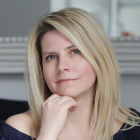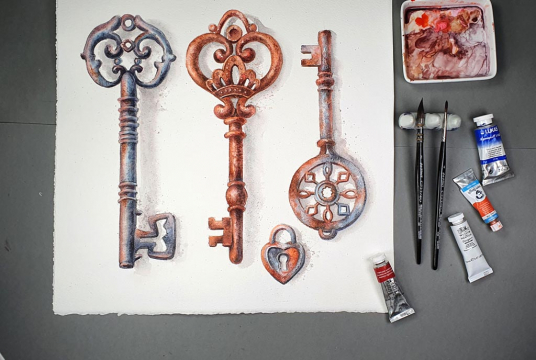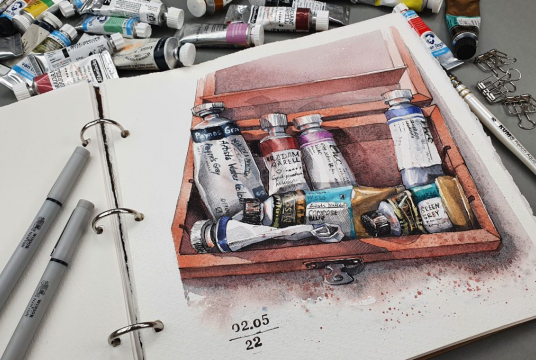Materials:
- Watercolor paper 100% cotton, rough, density 300 g/m². You can replace it with any brand watercolor paper 100% cotton, rough or fine-grained, density 250-300 g/m².
- erasers
- masking tape
- Wooden or plastic board
- paper towels
Watercolor paint in tubes or pots
- Cobalt Turquoise PB28
- Pyrrol Orange PO71
- Potters Pink PR233
- Sienna Burnt PBr7
- Yellow Ochre PY43
- Caput Mortuum PR 101
- Amethyst Genuine, Shadow Violet, Lunar Black
These colors can be replaced by others. You can choose your own basic palette with other colors. Just check first which colors will blend together.
- Two watercolor brushes medium size
- One synthetic brush small with sharp tip
- Paper towels
- Mixing palette (ceramic or plastic)








